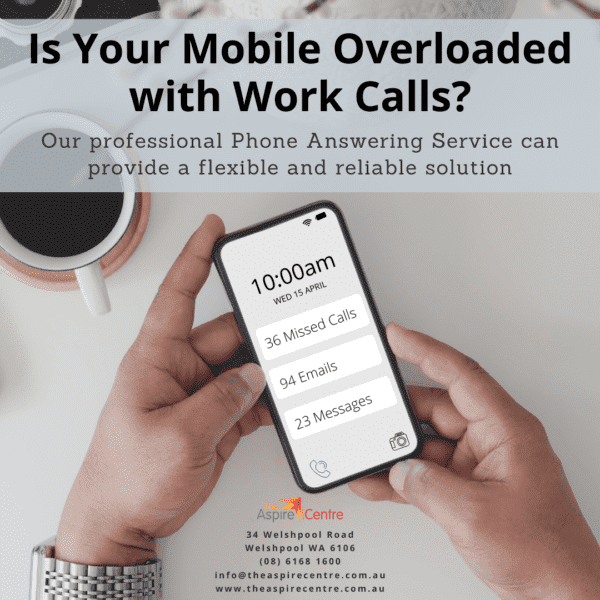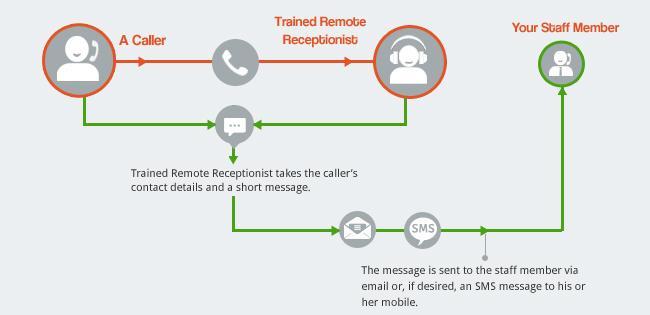All Categories
Featured
Table of Contents
Which Is Best Virtual Receptionist & Phone Answering Services Australia Company
This device and its successors were designed by Sava Jacobson, an electrical engineer with a private consulting service. While early answering makers utilized magnetic tape technology, many modern equipment utilizes solid state memory storage; some devices utilize a mix of both, with a solid-state circuit for the outgoing message and a cassette for the incoming messages.
"toll saving" below) (phone answering service). This works if the owner is evaluating calls and does not want to consult with all callers. In any case after going, the calling celebration must be informed about the call having been addressed (in many cases this starts the charging), either by some remark of the operator, or by some greeting message of the little bit, or dealt with to non-human callers (e.
This holds particularly for the TADs with digitally stored welcoming messages or for earlier makers (prior to the increase of microcassettes) with an unique limitless loop tape, different from a second cassette, dedicated to recording. There have actually been answer-only gadgets without any recording capabilities, where the greeting message needed to notify callers of a state of present unattainability, or e (virtual telephone answering).
What Is The Best 10 Sectors That Can Benefits From A Phone Answering Service Deal

about accessibility hours. In recording Little bits the greeting normally includes an invite to leave a message "after the beep". An answering maker that uses a microcassette to tape-record messages On a dual-cassette answerphone, there is an outgoing cassette, which after the defined variety of rings plays a pre-recorded message to the caller.

Single-cassette voice mail include the outgoing message at the beginning of the tape and incoming messages on the staying area. They first play the statement, then fast-forward to the next available area for recording, then tape-record the caller's message. If there are numerous previous messages, fast-forwarding through them can cause a considerable delay.
This beep is often referred to in the welcoming message, asking for that the caller leave a message "after the beep". Little bits with digital storage for the recorded messages do not show this hold-up, of course. A TAD may provide a push-button control facility, where the answerphone owner can ring the home number and, by going into a code on the remote telephone's keypad, can listen to tape-recorded messages, or delete them, even when far from house.
Best Call Answering Service You Can Buy

Therefore the maker increases the variety of rings after which it addresses the call (generally by two, resulting in 4 rings), if no unread messages are presently kept, but responses after the set number of rings (typically 2) if there are unread messages. This permits the owner to discover whether there are messages waiting; if there are none, the owner can hang up the phone on the, e.
Some makers also enable themselves to be from another location triggered, if they have actually been turned off, by calling and letting the phone ring a certain a great deal of times (usually 10-15). Some company abandon calls already after a smaller number of rings, making remote activation difficult. In the early days of TADs a special transmitter for DTMF tones (dual-tone multi-frequency signalling) was regionally needed for remote control, given that the formerly used pulse dialling is not apt to communicate suitable signalling along an active connection, and the dual-tone multi-frequency signalling was executed stepwise.
Any inbound call is not identifiable with respect to these residential or commercial properties in advance of going "off hook" by the terminal devices. So after going off hook the calls need to be switched to proper devices and only the voice-type is right away accessible to a human, however perhaps, however need to be routed to a LITTLE BIT (e.
Who Is The Best Live Answering Services - Australia Service
What if I told you that you do not need to in fact get your device when responding to a customer call? Somebody else will. So convenient, best? Responding to call doesn't need somebody to be on the other end of the line. Efficient automated phone systems can do the trick simply as effectively as a live representative and in some cases even better.
An automatic answering service or interactive voice response system is a phone system that interacts with callers without a live person on the line - local phone answering service. When companies use this technology, clients can get the answer to a question about your business merely by utilizing interactions set up on a pre-programmed call flow.
Although live operators update the customer service experience, lots of calls do not require human interaction. A simple taped message or directions on how a consumer can recover a piece of information generally resolves a caller's immediate need - answer phone service. Automated answering services are an easy and effective method to direct inbound calls to the right person.
Who Has The Best What Is An Answering Service??
Notification that when you call a business, either for assistance or product questions, the very first thing you will hear is a pre-recorded voice welcoming and a series of alternatives like press 1 for customer support, press 2 for questions, and so on. The pre-recorded options branch out to other options depending upon the client's selection.
The phone tree system assists direct callers to the ideal individual or department utilizing the keypad on a smart phone. In some instances, callers can use their voices. It's worth keeping in mind that auto-attendant alternatives aren't restricted to the ten numbers on a phone's keypad. As soon as the caller has picked their very first choice, you can develop a multi-level auto-attendant that utilizes sub-menus to direct the caller to the best kind of help.
The caller does not need to interact with an individual if the auto-attendant phone system can manage their concern. The automated service can path callers to a worker if they reach a "dead end" and require support from a live agent. It is costly to hire an operator or executive assistant.
Best Outsource Answering Service Company Sri Lanka Shop Near Me
Automated answering services, on the other hand, are substantially cheaper and supply significant expense savings at approximately $200-$420/month. Even if you do not have actually dedicated staff to manage call routing and management, an automated answering service enhances performance by enabling your team to focus on their strengths so they can more efficiently invest their time on the phone.
A sales lead routed to client service is a lost shot. If a client who has item concerns reaches the wrong department or gets insufficient answers from well-meaning employees who are less trained to handle a specific type of concern, it can be a cause of disappointment and frustration. An automatic answering system can minimize the number of misrouted calls, thus helping your staff members make better use of their phone time while maximizing time in their calendar for other jobs.
With Automated Answering Systems, you can develop a tailored experience for both your staff and your callers. Make a recording of your primary greeting, and just upgrade it frequently to reflect what is going on in your organization. You can develop as many departments or menu choices as you want.
Table of Contents
Latest Posts
High-Quality Medical Answering Service Near Me
Value Virtual Assistant Phone Answering Near Me ( Australia 4000)
Efficient Call Management Service Near Me ( Adelaide 5067)
More
Latest Posts
High-Quality Medical Answering Service Near Me
Value Virtual Assistant Phone Answering Near Me ( Australia 4000)
Efficient Call Management Service Near Me ( Adelaide 5067)